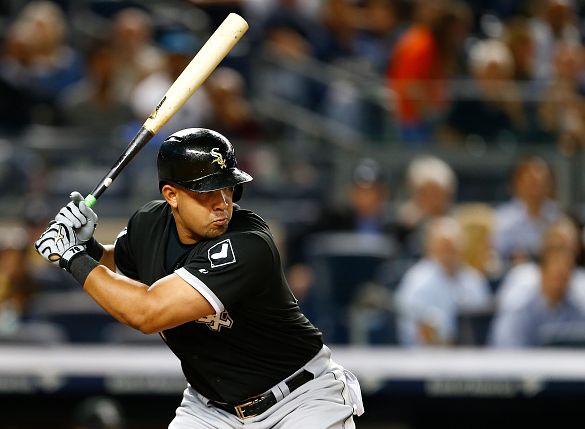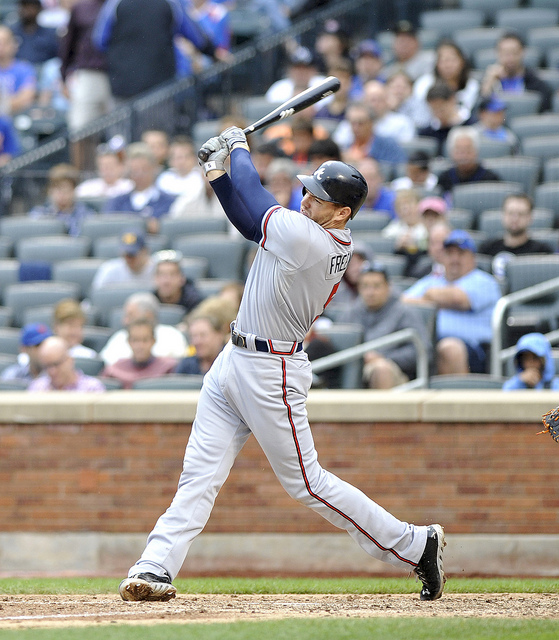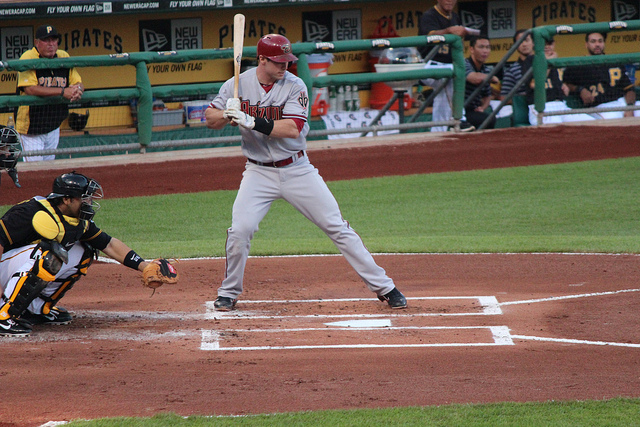2016 Fantasy Baseball: Plate Discipline — First Basemen

For those that watch baseball religiously, a lot has been made of the so-called five tools that scouts look to when evaluating players. While fielding and throwing are important, they typically don’t matter to fantasy players. So, most fantasy players focus on the other three tools: hitting, hitting for power, and speed. That translates into hitting for average, hitting for power, and stealing bases.
More and more leagues are including an on base element. That could be walks or on base percentage. Even leagues that continue to use the standard five categories can take advantage of what some lovingly call the sixth tool (or fourth fantasy tool): plate discipline. As scouts and baseball executives are becoming more increasingly aware, players are born with plate discipline or are not.
Essentially, the difference between the hit tool and the plate discipline tool is that with the plate discipline tool you are able to recognize which pitches you should swing at. When looking at the data, the key statistic (as found at Fangraphs) is Oswing. That is the percentage of pitches outside the strike zone that a hitter swings at. Talented hitters can make contact on those pitches, but usually it is the kind of contact pitchers want.
Plate discipline is only one of the four tools that fantasy players look for, so you shouldn’t govern your entire draft based on plate discipline, but it does allow us to find the occasional sleeper and avoid the occasional rotter. In this series, we will identify a couple of sleepers and a couple of players who could end up being busts. As you might imagine, doing so for first basemen is a unique challenge. Since it is the single deepest position in fantasy baseball, identifying sleepers and rotters is a bit tricky. We’ll do our best.
Sleepers
| SO% | BB% | Oswing | Zcontact | Contact | BABIP | |
| 2013 | 17.1 | 14.5 | 25.8 | 89.3 | 82.7 | .301 |
| 2014 | 18.8 | 17.1 | 22.0 | 85.6 | 81.0 | .249 |
| 2015 | 18.3 | 16.2 | 21.6 | 89.5 | 83.0 | .261 |
We’ve included the batting average on balls in play (BABIP) because it helps explain why certain things occur. For instance, Santana has been labeled as a disappointment the past couple of seasons. This is primarily because most leagues include only the five basic statistics and he typically has been a low batting average guy. He hit a respectable .268 in 2013 because of a healthy .301 BABIP. That dipped to .231 the past two seasons and most of that can be attributed to the BABIP.
We’ve learned a lot more about BABIP in recent seasons than when the concept was first trotted out. That being said, there is no good reason that someone that makes as much contact as Santana should hit below .250. Even when you look at his strikeout rates, they paint a picture of a player that should be performing better than he is.
| SO% | BB% | Oswing | Zcontact | Contact | BABIP | |
| 2013 | 17.5 | 12.0 | 23.9 | 88.5 | 83.8 | .383 |
| 2014 | 18.5 | 11.6 | 25.4 | 88.8 | 84.7 | .342 |
| 2015 | 16.8 | 10.1 | 27.6 | 90.2 | 84.6 | .309 |
Again, the inclusion of BABIP is crucial here. At first glance, Mauer’s 2015 season would seem to be in context with the norm. However, each player has their own norm and Mauer has a career .344 BABIP. His placement here is in expectation that he will approach his career norm this season. Even with that expectation, Mauer is an eroding player. His Oswing rate has increased each season since 2011. His walk rate has decreased each season since 2012. On the other hand, he is making more contact in the zone and his overall contact rate is holding steady. He’s not a good long-term bet, but for 2016 he might just surprise some people.
Rotters
| SO% | BB% | Oswing | Zcontact | Contact | BABIP | |
| 2014 | 21.1 | 8.2 | 41.6 | 84.7 | 73.2 | .356 |
| 2015 | 21.0 | 5.8 | 38.3 | 87.1 | 76.7 | .333 |
This is where some fans pull a Kyle’s mom from South Park (“what what what?!”). My rankings on Abreu have already been questioned and this segment is sure to get some rolled eyes. Keep in mind that plate discipline is just one part of the puzzle. He still has awesome power and he still has a well-developed hit tool. If we use the rotting image then it probably will make more sense than the bust image. Abreu is too talented to be a bust. What is more likely to happen is that he will continue to slip slightly as he did last season until he proves he is willing/able to lay off of pitches outside the strike zone. He’s still a top ten first basemen and likely will be for the foreseeable future.
| SO% | BB% | Oswing | Zcontact | Contact | BABIP | |
| 2013 | 21.2 | 5.5 | 45.2 | 82.8 | 77.9 | .255 |
| 2014 | 24.2 | 5.5 | 41.7 | 82.1 | 73.4 | .298 |
| 2015 | 19.7 | 5.0 | 37.5 | 84.6 | 77.3 | .264 |
Gattis qualifies as a first baseman because he is a designated hitter. He will qualify as a catcher in some leagues and he is valuable in those leagues. Anyone that hits 20 or more home runs is valuable as a catcher. Gattis’ problem is that even though he is improving in some areas (strikezone judgment) it isn’t coming fast enough to overcome his shortcomings. He is a low batting average/low walk guy. Those guys don’t tend to last very long as regulars.



